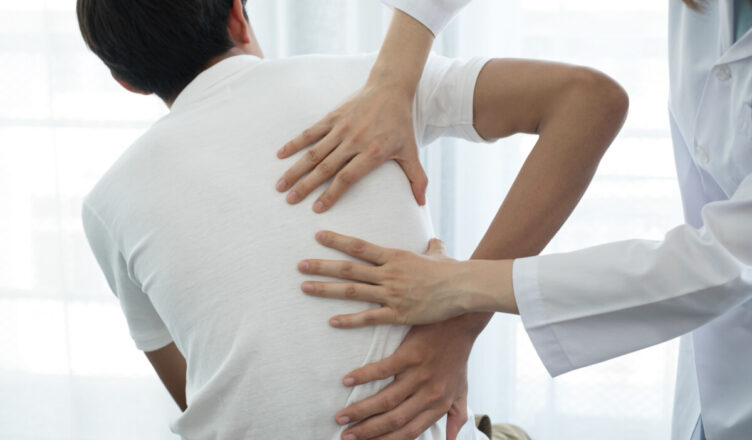Low back pain can happen to anyone, and it’s quite common. For example, about 75% percent of people living in U.S will experience some form of low back pain in their lifetime. Though, back pain usually heals on its own, and it responds extremely well to treatment.
There are many causes of low back pain including from sitting too long, being in an accident or sleeping the wrong position. Medication may be used for a short period to reduce back pain and spasms, but generally low back pain can be treated effectively with physical therapy, chiropractic care, osteopathic manipulation and simple home exercises.
What is low back pain?
The mainstream generally believes joints involve knees and shoulders. Though, the human back is made up of many small joints, these small back joints don’t have the same range of motion as the knee, but they can still have the potential for being injured or inflamed.
Mechanical low back pain is a typically-used description for back pain arising from muscles and joints. It involves pain felt along the spine below the ribs down to the tailbone. Occasionally pain may even extend from the back into one or both legs.
If pain occurs unexpectedly and intensely it is referred to as acute low back pain. If the pain flares up on and off over time with variable levels of pain strength, it is denoted as chronic low back pain. It is infrequent, but some forms of back pain can be signs of more critical medical condition, including cancer or internal organ disease, so it’s vital to visit healthcare provider if the pain symptoms aren’t improving in the short time.
What are the causes of low back pain?
Everyone has a dissimilar description about what aggravates their back. However, key origins include: bending and lifting with poor posture or trying to pick up something that’s too heavy are typical causes of low back pain. Overloading back muscles can cause a strain of the muscles and sprain of the joints.
Over time, repetitive bending and prolonged sitting conditions with bad posture may also lead to low back pain. In these situations, the source of the pain is typically an injured intervertebral disc, which can result in back spasms and leg symptoms, such as numbness or tingling sensations down the legs.
Involvement in sports and exercise activities involves quick twisting movements that may tweak the back, as well as sleeping in an awkward position. Both of these conditions can irritate or inflame a facet joint, one of the joints along the human spine that supports bending and twisting. Spinal cord nerves run through the facet joints and connect with other parts of the body. When these joints become stiff or spasm, it makes body movements extremely problematic.
What are low back pain symptoms?
Everyone experiences low back pain differently; some common conditions include:
- Low back pain and discomfort resulting from moving from sitting to standing.
- Pain and stiffness experienced when waking up in the morning.
- Pain in the buttock, pelvis and muscles.
- Pain moving from low back/buttocks to the legs.
- Sharp, stabbing pain when bending and twisting.
- Stiffness, tightness, pulling sensation in lower back.
How is back pain diagnosed?
Chronic back pain is diagnosed based on: how often the back experiences pain; how long it lasts and; if you repeatedly have the same type of pain.
Frequently, the back pain can be traced to a particular injury. Generally, it’s not necessary to do diagnostic testing such as x-rays, magnetic resonance imaging (MRI) or CT scan in severe pain cases. If the back pain doesn’t respond to treatment, the physician / healthcare professional may order tests to determine whether there’s an underlying non-mechanical issues condition resulting in the back pain.
What treatments are used for low back pain?
Commonly, back pain with a simple cause will go away with rest and time. But there are many treatments available for back pain, and most are regarded as non-invasive.
The first choice for treatment is most often a combination of exercise combined with hands-on therapy by a trained clinician. Regularly, physical therapy, chiropractic care, and acupuncture are effective for decreasing pain, increasing range of motion and shortening duration of your pain and associated discomfort.





